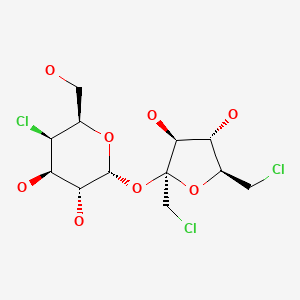Caffeine Free Diet Soda While Breastfeeding
NCBI Bookshelf. A service of the National Library of Medicine, National Institutes of Health.
Drugs and Lactation Database (LactMed) [Internet]. Bethesda (MD): National Library of Medicine (US); 2006-.

Drugs and Lactation Database (LactMed) [Internet].
Show details
- Contents
Sucralose
Last Revision: September 20, 2021.
Estimated reading time: 2 minutes
CASRN: 56038-13-2

Drug Levels and Effects
Summary of Use during Lactation
Sucralose has been found in the breastmilk of some nursing mothers who report consuming artificially sweetened beverages and sweetener packets in the past 24 hours and in all women given a sucralose-sweetened soda. Because sucralose is poorly absorbed after oral ingestion, it is not likely to reach the bloodstream of the infant or cause immediate adverse effects in breastfed infants or have a sucralose intake greater than the acceptable daily intake.[1] Ingestion of diet drinks containing low-calorie sweeteners might increase the risk of vomiting in breastfed infants. Some authors note that the levels of sucralose in milk can exceed the sweetness threshold in milk and affect intestinal enzymes and the microbiome. They suggest that women may wish to limit the consumption of nonnutritive sweeteners while breastfeeding because their effect on the nursing infants are unknown.[2,3]
Drug Levels
Maternal Levels. Twenty lactating women completed background questionnaires about breastfeeding and the intake of nonnutritive sweeteners in the prior 24 hours. Each then donated a milk sample that was analyzed for the presence of nonnutritive sweeteners. Sweetener intake was primarily from diet sodas and sweetener packets. Of the 14 women who reported intake of a nonnutritive sweetener, 3 had sucralose detectable in their breastmilk in concentrations ranging from 10 to 40 mcg/L.[2]
Thirty-four women, 14 with normal weight and 20 with obesity, ingested 12 fluid ounces of a caffeine-free diet cola containing 68 mg of sucralose and 41 mg acesulfame potassium after an overnight fast prior to breakfast. Breastmilk samples were taken from the same breast every hour for 6 hours. Sucralose was detectable in breastmilk at baseline before the soda in 21% of women and in all women after the cola. The highest measured sucralose concentrations in breastmilk ranged from 4 to 7388 mcg/L, with one woman having the very high concentration; the median peak was 8 mcg/L. Sucralose first appeared in breastmilk 2 hours after ingestion and the peak concentration milk in outlier occurred at 1 hour after ingestion. For the other women, sucralose concentrations were still rising at 6 hours after ingestion, so the true peak might be higher.[4]
Infant Levels. Relevant published information was not found as of the revision date.
Effects in Breastfed Infants
A cross-sectional survey assessed the dietary history of US mothers nursing infants between 11 and 15 weeks of age. The survey was used to estimate the amount of diet soda and fruit drinks consumed by the women. There were no statistically significant differences in infants' weight or z-scores based on low calorie sweetener exposure. However, infants exposed to low calorie sweetener in milk once or less per week had a statistically significantly higher risk of vomiting than those who were not exposed. Greater exposure was not associated with vomiting. It was not possible to assess the effects of specific sweeteners.[5]
Effects on Lactation and Breastmilk
Relevant published information was not found as of the revision date.
References
- 1.
-
Bailón Uriza R, Ayala Méndez JA, Cavagnari BM, et al. Nutr Hosp. 2020;37:211–22. [Non-caloric sweeteners in women of reproductive age - A consensus document] [PubMed: 31960692]
- 2.
-
Sylvetsky AC, Gardner AL, Bauman V, et al. Nonnutritive sweeteners in breast milk. J Toxicol Environ Health A. 2015;78:1029–32. [PMC free article: PMC5583633] [PubMed: 26267522]
- 3.
-
Rother KI, Sylvetsky AC, Schiffman SS. Non-nutritive sweeteners in breast milk: Perspective on potential implications of recent findings. Arch Toxicol. 2015;89:2169–71. [PMC free article: PMC4749460] [PubMed: 26462668]
- 4.
-
Rother KI, Sylvetsky AC, Walter PJ, et al. Pharmacokinetics of sucralose and acesulfame-potassium in breast milk following ingestion of diet soda. J Pediatr Gastroenterol Nutr. 2018;66:466–70. [PMC free article: PMC5825238] [PubMed: 29077645]
- 5.
-
Huang Q, Murphy J, Smith ER, et al. Diet beverage intake during lactation and associations with infant outcomes in the infant feeding practices study II. Nutrients. 2021;13:3154. [PMC free article: PMC8472746] [PubMed: 34579031] [CrossRef]
Substance Identification
CAS Registry Number
56038-13-2
Drug Class
Breast Feeding
Lactation
Artificial Sweeteners
Sweetening Agents
-
Disclaimer: Information presented in this database is not meant as a substitute for professional judgment. You should consult your healthcare provider for breastfeeding advice related to your particular situation. The U.S. government does not warrant or assume any liability or responsibility for the accuracy or completeness of the information on this Site.
Caffeine Free Diet Soda While Breastfeeding
Source: https://www.ncbi.nlm.nih.gov/books/NBK501519/
0 Response to "Caffeine Free Diet Soda While Breastfeeding"
Post a Comment